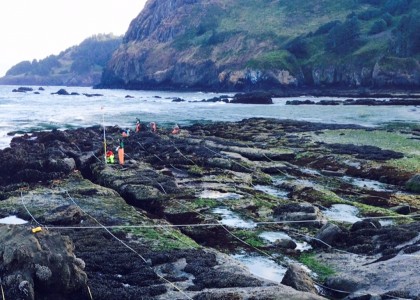
Exploring Intertidal Data: Before, During, After Sea Star Wasting
Results from our intertidal surveys indicate that while Ochre Sea Star densities declined during the sea star wasting outbreak, they are rebounding … Read More

Results from our intertidal surveys indicate that while Ochre Sea Star densities declined during the sea star wasting outbreak, they are rebounding … Read More

Our team ventured out into the intertidal this month to carry out two days of mussel bed surveys, at Otter Rock and Cascade Head … Read More

Our staff were excited to venture out into the intertidal this week to conduct Sea Star Wasting surveys at Otter Rock and Cascade Head. Read More

Like a doctor diagnosing a disease, learn how we identify the signs of Sea Star Wasting Syndrome. Read More

Mollusks have evolved a stunningly effective feeding structure called a radula: a ribbon-like tongue covered with rows of rock-hard, razor-sharp teeth. Read More

Patches of barnacles blanket the rocky surfaces in and around Oregon’s marine reserves, and hide fascinating life history secrets. We’ve invited guest author, filmmaker, and photographer Stephen Grace to share his photos and insights on barnacles with us. Read More

The sea anemones that paint Pacific Northwest tidepools with color look like tranquil flowers but are, in fact, predatory animals. They are cousins of jellyfish, coral, and siphonophores like the Portuguese man o’ war. Read More

Summer surveys have started for everyone’s favorite echinoderm – the sea star. So why do we monitor sea stars in Oregon’s reserves? Read More

In 2014, the Pacific Coast of North America was hit by a mysterious epidemic that wiped out millions of sea stars, marking the largest marine animal disease event in recorded history. Looming questions researchers are trying to answer include … Read More

In the field last week, scientists from UCSC and ODFW set up sampling plots to monitor rocky intertidal habitats at the Otter Rock and Cascade Head marine reserves. Read More